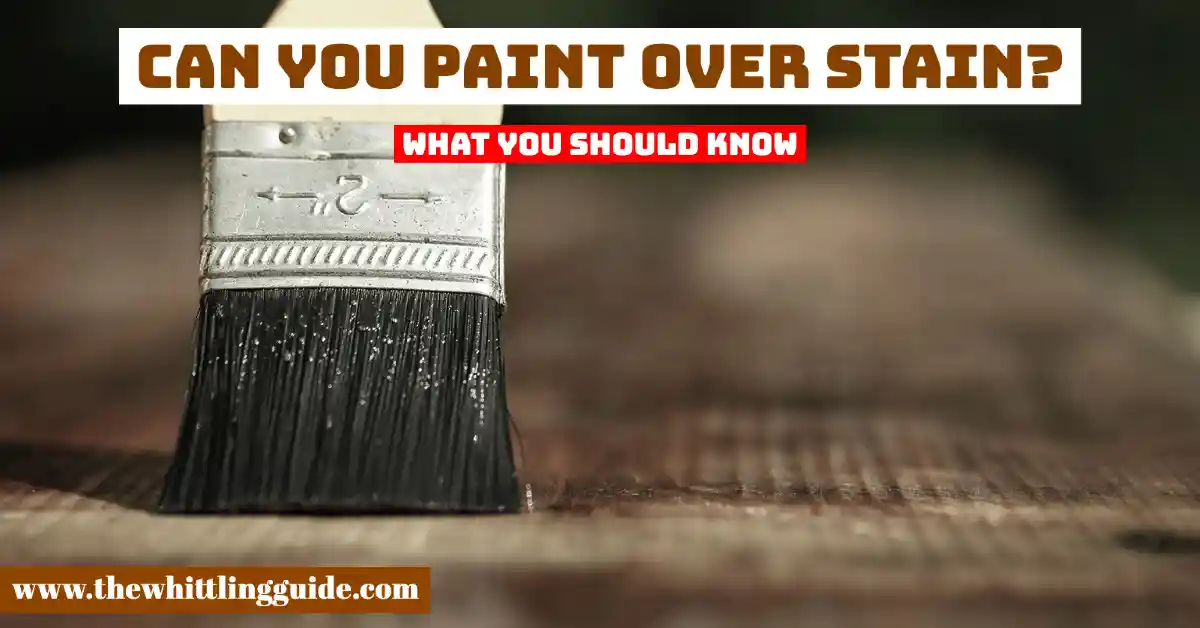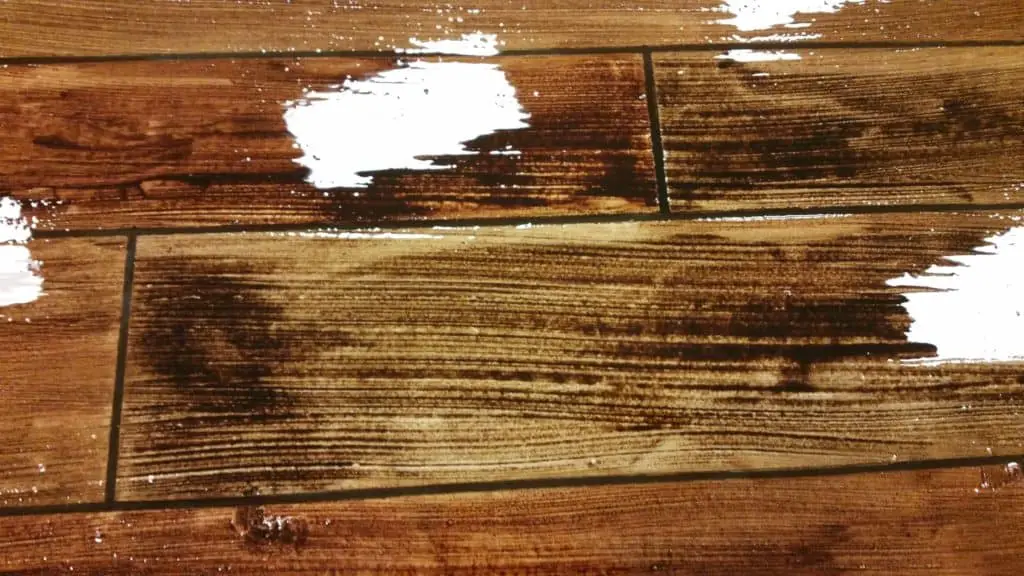
Can you use paint over stain?
You have stained your furniture, but the look is not what it used to be. It’s time to make a change. Paint is often an easy way to change the look of furniture. I use it as part of the upcycling process. Is that the right approach to stain? I guess the question is whether you can paint over stain. Let us take a look at that and more.

What is stain?
A stain is a substance used in the woodwork to change or enhance the natural color of your wood. It penetrates through wood as it closes the holes inside. That takes away the chance of water and chemicals getting inside. It highlights the grain and intensifies existing tones.
Wood stains come in a variety of colors. There are hidden grain patterns that stains take out and are beautiful. That results in using stains as decorative substances. Extra durability is what you get from the stain combined with a topcoat. The look you are looking for determines the type of stain to use.
There are water-based stain and oil-based stain. The water-based stain contains water and pigment. Its mixture evaporates when applied. What is left behind is the pigment.
A water-based stain is ideal for a new pine table since it dries faster than an oil-based stain. It is easy to clean. It has a wide range of colors. Oil-based stain penetrates interior doors and furniture. It adds color without raising the grain. More time is needed when working with oil-based stains. It revives old timber.
Can you paint over the stain?
You can paint over stained wood as long as you choose the appropriate paint. Choose the best method that suits the type of stain. Proper prep is a requirement. Use oil-based paint or latex paint over the wood stain. A correct priming procedure is needed when painting over a wood stain. Start by gathering your painting tools.
A plastic covering on the table allows you to use your work base—precise hardware tools of the working space. These include drop cloths and creating space for a wide working area. Remove the gloss before you add paint using sandpaper. Put on a respirator so that you avoid inhaling the particles.
A chemical filter protects you from the chemicals used. A proper ventilation system is required. Wide spaces give you room to move as you reach the whole surface area. Liquid sandpaper works well for tight spaces. De-gloss the surface so that the primer bonds with the wood surface.
Make sure you wash the wood surface removing oils and dirt. Avoid harsh cleaning detergents. Fill holes and sand the wood. Add primer and repair the surface with a filler. Now the surface is ready for painting.
Follow the rules on how to paint stained wood with care. Remember that all stains bleed hence the need for paint to stop the bleeding. Insert screws inside holes to enlarge the holes. It gives you space to hang while drying the wood surface.
Does latex paint adhere to wood?
Yes, it does. It is easy to paint with when painting furniture. Although it is not as durable as oil-based paint, add a top coat for a lasting surface. Apply two coats of latex paint over the primer to achieve complete coverage. Wait for the first coat to dry overnight. That adds protection to the surface.
When using a roller, brushstrokes are needed, and a brush to apply the paint. A good quality paintbrush makes the process bearable. A gloss or semi-gloss does not require a topcoat, unlike a matte or satin finish. Latex paint is easy to clean with soap and water.
Paint over polyurethane?
You can paint over polyurethane as long as you follow the tips. The paint you apply will pee off your project if you do not prepare the wood properly. Gather your tools and get started—clean and sand the surface using mineral spirits and a clean cloth. Fine-grade sandpaper is for sanding.
Do not remove all the polyurethane. A little sanding for the paint to adhere to the surface will be enough. Liquid sandpaper also works. Prime the wood surface to keep the stains from coming out. Let it dry overnight. Paint the surface and let each coat dry before you add another one.
Do you need a primer for stain?
A primer is for stain since it increases the durability of the wood stain. It ensures better adhesion to the surface. Primers can be unnecessary for a wood stain treatment if you have already met your desired wood grain. You do not have to be worried when your material is in harsh weather conditions and high traffic.
A solid stain protects it from natural conditions. A primer for wood stain leaves your surface with a professional look that lasts for years. Tint the primer to the same color as your stain or topcoat. I recommend priming with a stain-blocking primer. Failure to use the stain-blocking primer causes water stains to start coming from wood tannins.
They bleed through latex paint. Bleeding takes years before it starts. A coat of primer blocks stains from coming through the topcoat. The more the wood stain bleeds, the more you must apply your primer. More top coats substitute the role of primer. However, it takes more time and more topcoats.
I advise you to use the best primer so that you do not risk bleeding. The BIN alcohol-based white shellac is powerful. Shake the primer regularly since it settles very fast. Add rubbing alcohol if it is too thick. It becomes easy to apply.
Give time to the primer as it dries. The waiting time depends on the type of primer, room temperature, and air humidity. Give the primer at least one hour to dry. Sanding between coats allows the primer to stay longer on the wood surface. Be careful when wood sanding, as you can easily remove previous coatings.
Brush or roller for painting over stain?
The best results come from a foam brush and a foam roller. Using a roller to apply paint makes the paint even. However, you still need a paintbrush to brush out the roller marks. Rounded ends on rollers remove the marks. Rollers are fast but not perfect.
A high-quality brush completes the painting process. Surfaces with detail are hard to paint using a roller. Rollers are for flat surfaces. A painting rush gets inside tight corners and complex spaces. A brush takes time on large surfaces.
What is essential is to know your furniture. An angled brush is ideal for furniture with multiple angles. If you have a roller and a paintbrush, I advise you to use both, starting with the roller. Wash both when done using soap and water so that they give maximum performance.
- Grain and Sheen: Teak Oil versus Danish Oil Uncovered - January 10, 2024
- The Cherry on Top: Crafting the Perfect Cutting Board - January 9, 2024
- Polyurethane Water-Based vs Oil-Based: Choosing the Right Finish - January 8, 2024